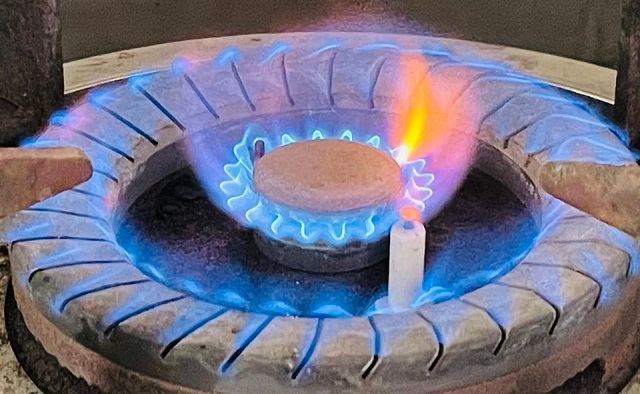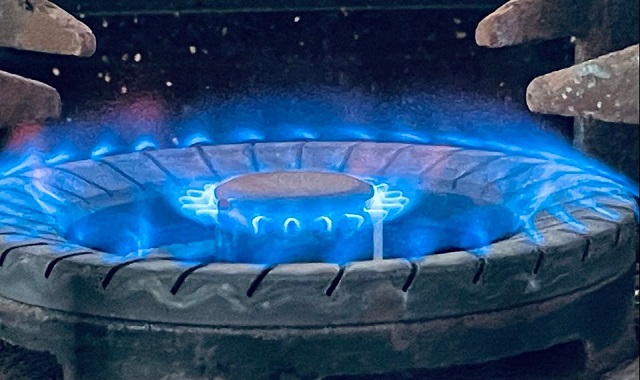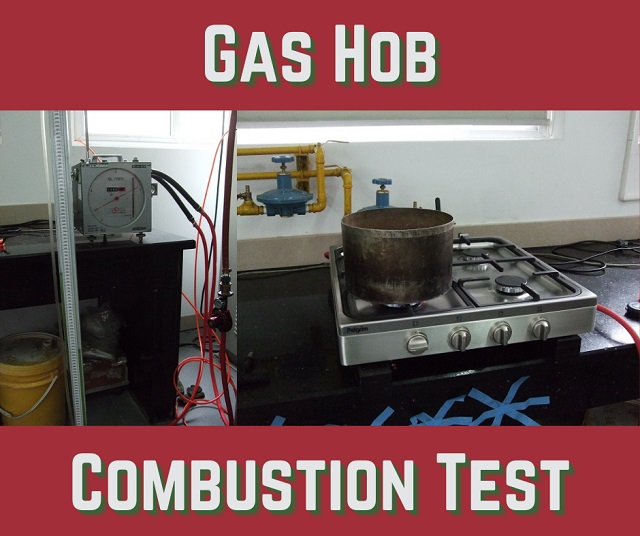You might have noticed differing flame colors if a gas hob is your kitchen’s primary cooker. In this article, I’d like to discuss what is the difference between yellow and blue flame usually seen on gas cookers.
After you got your new gas hob…
you would have observed that the flame was blue when it was first used…
provided of course that the unit is working normally.
While on the other hand, if the gas hob had been used for a longer period…
there could be instances when the flame color is yellow and such a phenomenon can be observed more often than not on the whole burners.
Let’s find out the difference!
What is the difference between Yellow and Blue flame?
The difference between Yellow and Blue flame is that YELLOW flame signifies that oxygen is deficient which causes incomplete combustion. With a very obvious yellow flame, the air-to-gas ratio is unbalanced, which in turn could produce higher carbon monoxide (CO) than carbon dioxide (CO2) which then can cause possible safety issues. On the other hand, BLUE flame denotes complete combustion. And with complete combustion, the flame is in its most efficient state and safer.
1) Yellow flame signifies INCOMPLETE combustion
As stated earlier, a yellow flame reveals incomplete combustion. However, many factors can cause yellow flame or incomplete combustion.
It could be due to a factory defect, a human error, and so on.

As mentioned earlier, when a gas hob flame is yellow the main cause would be the air-to-gas ratio is not balance!
While other contributing factors could result in yellow flames such as abnormal use, and proper care and maintenance just to name a few.
An obvious yellow flame is indicative that generated carbon monoxide (CO) could be high and it can cause concern for someone using the kitchen.
Therefore, turning ON your cooker hood while cooking would be beneficial.
The yellow flame could also cause an unfavorable mark on the cookware. Normally, it will produce more soot and will turn the bottom of the cookware black – which means will need more cleaning for you.
2) Blue flame denotes COMPLETE combustion
As mentioned earlier, Blue flame tells us that the air-to-gas ratio is balanced and it means complete combustion is achieved.
With blue flame – the proper ratio between carbon monoxide (CO) and carbon dioxide (CO2) is also fulfilled.
While blue flame means that the gas hob’s thermal performance is most efficient.
Because there’s no energy loss…
This basically means the flame is in its hottest state and means cooking will be faster.

If the flame is blue it will not also produce black soot and your cookware will always remain clean at the bottom.
Here’s a reference for the proper (blue) flame >> https://www.jaxenergy.com/learning-center-articles/proper-flame
What color should a Gas Hob flame be?
The proper color for gas hob should be blue!
Regardless if the gas hob uses Natural gas or an LPG, the desired burner flame remains the same – that is blue.
And this characteristic is checked and tested at factory sites.

The above picture is a sample of how the combustion of a gas hob is checked. Testing includes the measurement of carbon monoxide (CO) and carbon dioxide (CO2), etc.
Testing is conducted based on the harmonized standard (IEC) and other regulatory test conditions.
Although only few batch representatives are tested for combustion,
But there’s a process in the production line to check one hundred percent for the yellow flame – this means only units that produce blue flame can be passed and be able to be shipped out.
Do Gas Hobs need Servicing?
If your gas hob produces very obvious yellow flames, then the answer is Yes.
There’s no doubt that a gas hob that continuously discharges yellow flame needs to be serviced.
But before calling for support remember to examine other factors.
Here’s a related article covering the possible causes of yellow flame in a gas hob.
Likewise, for high-rise buildings that have a centralized gas supply…
The gas technician will check if there’s no abnormality with the gas supply including the gas hob attached to it.
Normally this is carried out or done regularly (at least once a year).
In case there are issues,
The gas technician will suggest recommendations on whether or not your gas hob will require servicing based on his findings during checking.
Final Thoughts
So there you have it, folks.
We have identified and differentiated Yellow and Blue flame.
Again, the difference between Yellow and Blue flame is as follows;
- Yellow flame – signifies incomplete combustion and a needed action should be taken to rectify it
- Blue flame – denotes complete combustion and a Blue flame is the desired flame for gas hobs
Also, it has to be noted that when a gas hob continuously discharges a yellow flame – it could be an indication that it already needs servicing.
BUT unless you have prior experience, repairing or replacing a gas hob with yellow flame should be done by professionals.
Remember, you are dealing with GAS… and SAFETY should always come first!
Because one mistake with gas could mean disaster… so be careful!
In closing, if you have any questions or suggestions please leave a comment below and I will try to answer as soon as I can and to the best of my knowledge.

This has been very helpful and explained where as I can understand clearly.
Hi Anna,
Thank you for visiting my website, and I’m glad you found this article helpful.
It’s my goal to create useful and easy-to-understand content that will benefit my readers. And shall continue to provide useful information about Home Appliances!
Yours truly,
Rowe